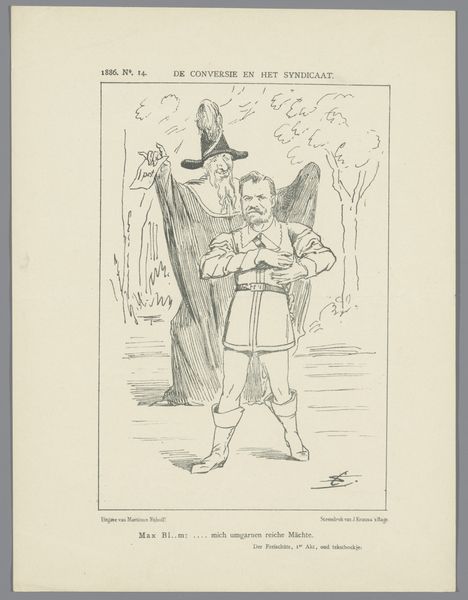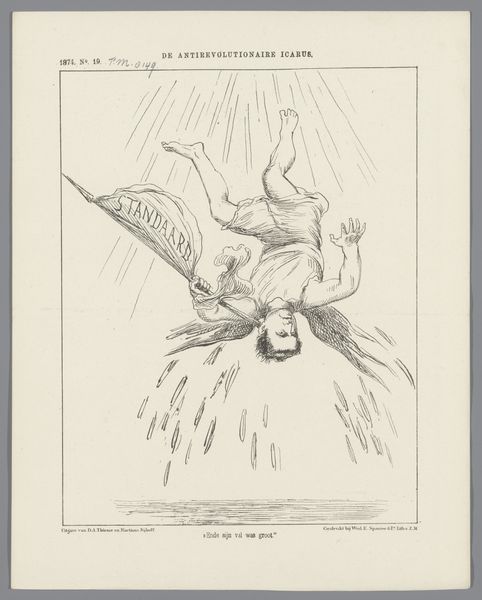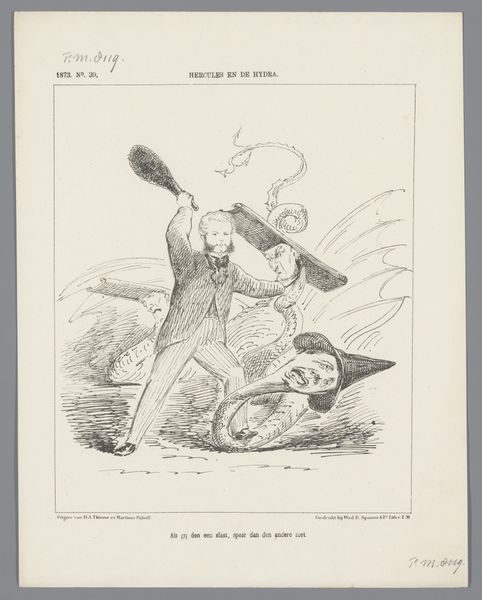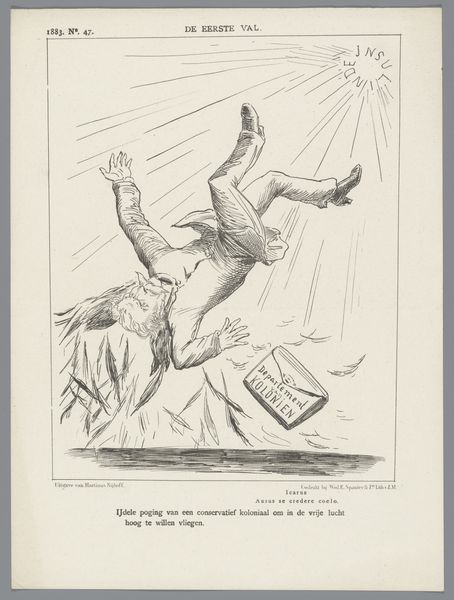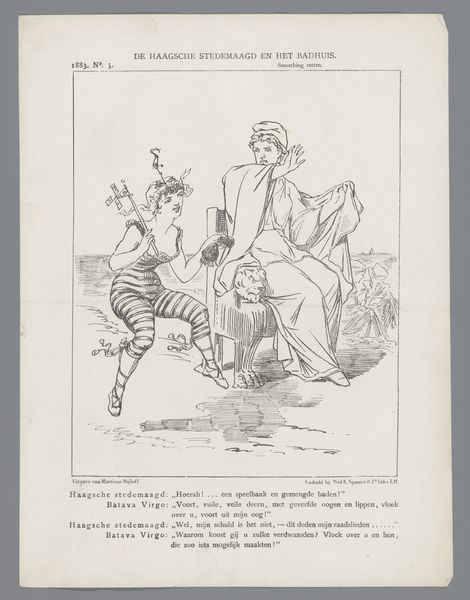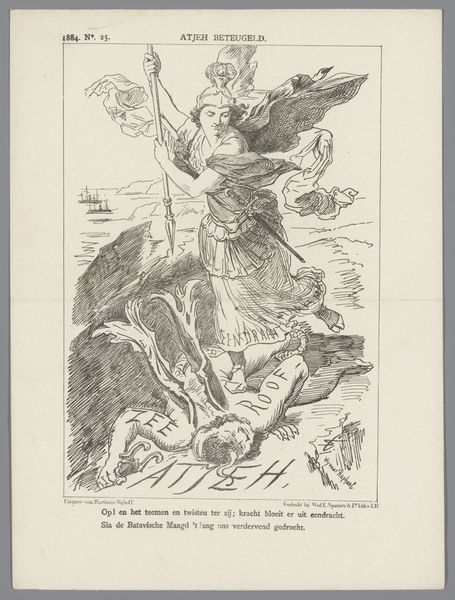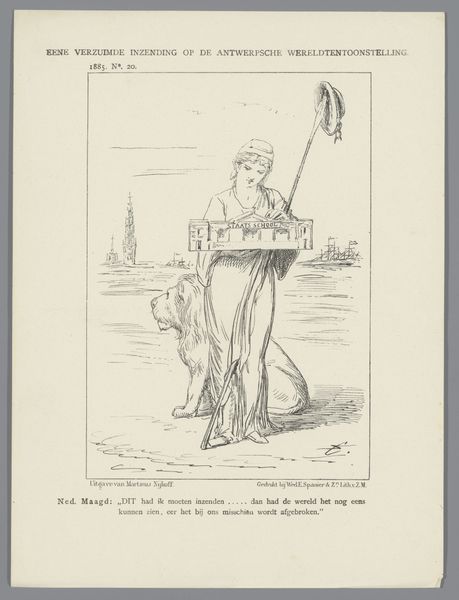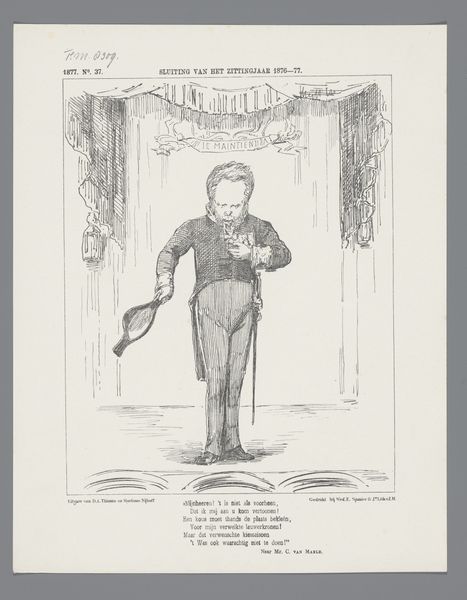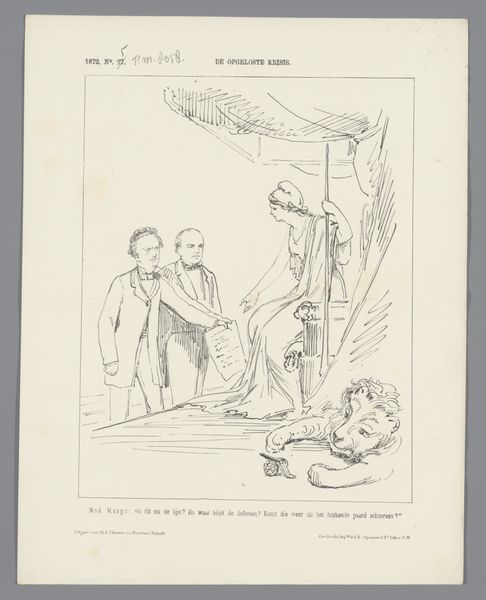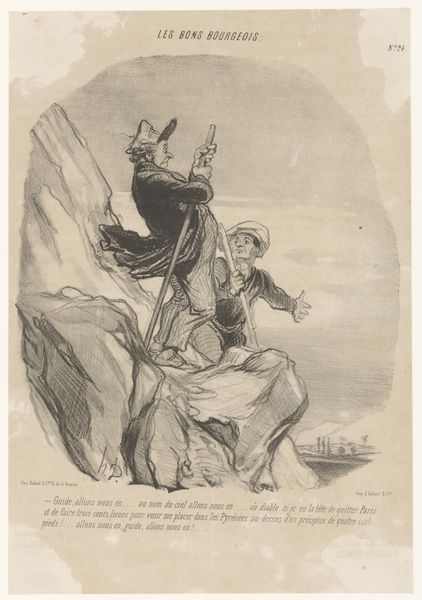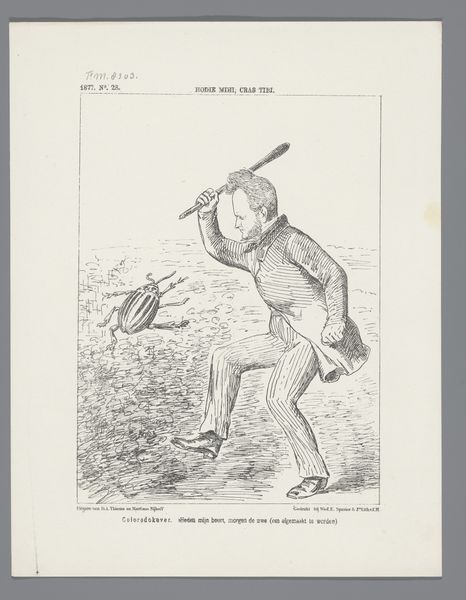
Dimensions: height 275 mm, width 215 mm
Copyright: Rijks Museum: Open Domain
Curator: This is a political cartoon featuring Otto von Bismarck, created in 1887 by Johan Michaël Schmidt Crans. The medium appears to be print, using drawing techniques to render the caricature. Editor: My first impression? A slightly absurd and satirical take. There's a forced levity here despite the subject matter, evident in the sketch-like quality of the lines and the angel wings strapped onto a decidedly earthly figure. Curator: Precisely. The imagery is heavy with symbolism. Bismarck, depicted with angel wings and brandishing an olive branch, is seemingly a messenger of peace, but the inscription along the bottom translates to, "Peace on earth and delight in war" providing an ironic counterpoint. Editor: I see it more as a commentary on the materials of power. The cheap paper and quickly rendered lines speak volumes. The very act of producing a printed image like this implies accessibility, meant to stir up feelings about a political leader through accessible image making, it democratizes the discourse, to a degree. Curator: An intriguing perspective. The caricature plays with our memory of historical figures and heroic imagery—angel wings suggest divine endorsement of leaders—it's quite a powerful commentary on propaganda and the visual rhetoric used to manipulate public opinion. The image also has a temporal element—Crans’ drawing brings up historical associations, placing Bismarck within an almost timeless narrative of political leaders and conflict. Editor: And that placement is fascinating. Look at the process itself: ink, paper, printing press – a whole network of labor behind a simple image. These weren't precious objects for a wealthy elite, but affordable, reproducible tools that shaped how everyday people understood power. What's more important is the consumption of these materials and the social interactions generated among viewers in daily life. Curator: Ultimately, Crans successfully uses irony and contradiction—mixing the sacred with the political to remind viewers of the manipulative power of images in shaping public consciousness. The effectiveness of visual satire as a form of political expression—even now. Editor: A really interesting print in thinking about materials, labour, image, circulation, and a new kind of viewer and consumption. A whole network emerges from a deceptively simple work.
Comments
No comments
Be the first to comment and join the conversation on the ultimate creative platform.

